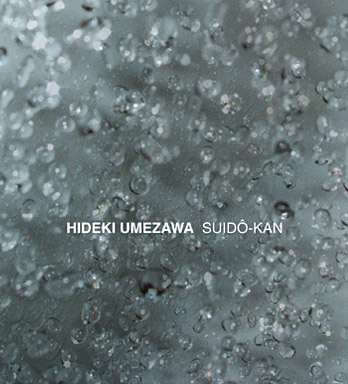








catalog number: moar4
artist: HIDEKI UMEZAWA
title: Suidô-Kan
format: CD
status: sold out
mOAR returns after a three year hiatus to present Suidô-Kan by Hideki Umezawa which is overall more minimal and less melodic than much of the electronic music published under his Pawn moniker. Still, he manages to sneak some of his signature glitches into at least one track (hear the sample). Suidô-Kan was created from environmental sounds involving water pipes, drainage pipes, rain, and improvising with faucet frequencies (in a public restroom) and glass harmonica (a xylophone made of glass tubes). Apart from six compositions by Hideki, this release also features a remix track by Tomas Phillips.This release is the first one in the mOAR catalog to use the custom inserts that and/OAR first introduced back in 2005 and the first to be limited to 100 copies. In spite of this fact, it is a replicated CD release (not a CDR).
A CLOSER LISTEN (March 2012)
A typical complaint of the young is, “I’m so bored! There’s nothing to do!” The opposite attitude is demonstrated by Hideki Umezawa, who was inspired to create this album on a rainy day after hearing “the water pipe sounds in a college restroom”. He then proceeded to experiment with the faucet, eventually adding the sounds of drainage pipes and glass harp. This is atypical behavior, but Hideki Umezawa is an atypical sound artist. As Pawn, he creates percussive electronic stylings from all manner of household objects, and on at least one prior occasion has used a kitchen sink. (Clearly the phrase “everything but the kitchen sink” does not apply to him.) He has an obvious ear for the musical properties hidden in water, and the computer and harmonica enhancements only serve to highlight the pre-existing drips and flows.
Suido-Kan is a wet album through and through, but never a deluge. At its loudest, it remains merely a stream. This enhances the album’s meditative value; it’s neither as quiet nor as single-toned as one might guess, and as a result, each of the seven pieces (including a Tomas Phillips remix) possesses a distinct timbre. The album grows more active as it progresses, with “Howling of Tubes 3″ offering splashes and the droning of what sounds like prayer bowls, offset by a series of bells and chimes. “Howling of Tubes 4″ sounds more like Pawn, thanks to the glass harp (which is really a xylophone, a confusion of terms), light electronics and a small collection of dropped objects; and the second half of the ensuing track pushes even further into this territory. But Unezawa’s closing piece returns to the ambient/field recording territory of the opening tracks, bringing the album full circle. The last three minutes are as soft as a shimmer. Phillips’ piece neither adds to nor detracts from the experience; it serves as an alternate take, but can’t – and probably shouldn’t – compete with the originals. In the end, Suido-Kan is a fine day spent in hydrogen and oxygen, and a welcome counterpart to Umezawa’s main body of work. (Richard Allen)
CLICK COVER IMAGE
TO SEE LARGER VERSION
REVIEWS





